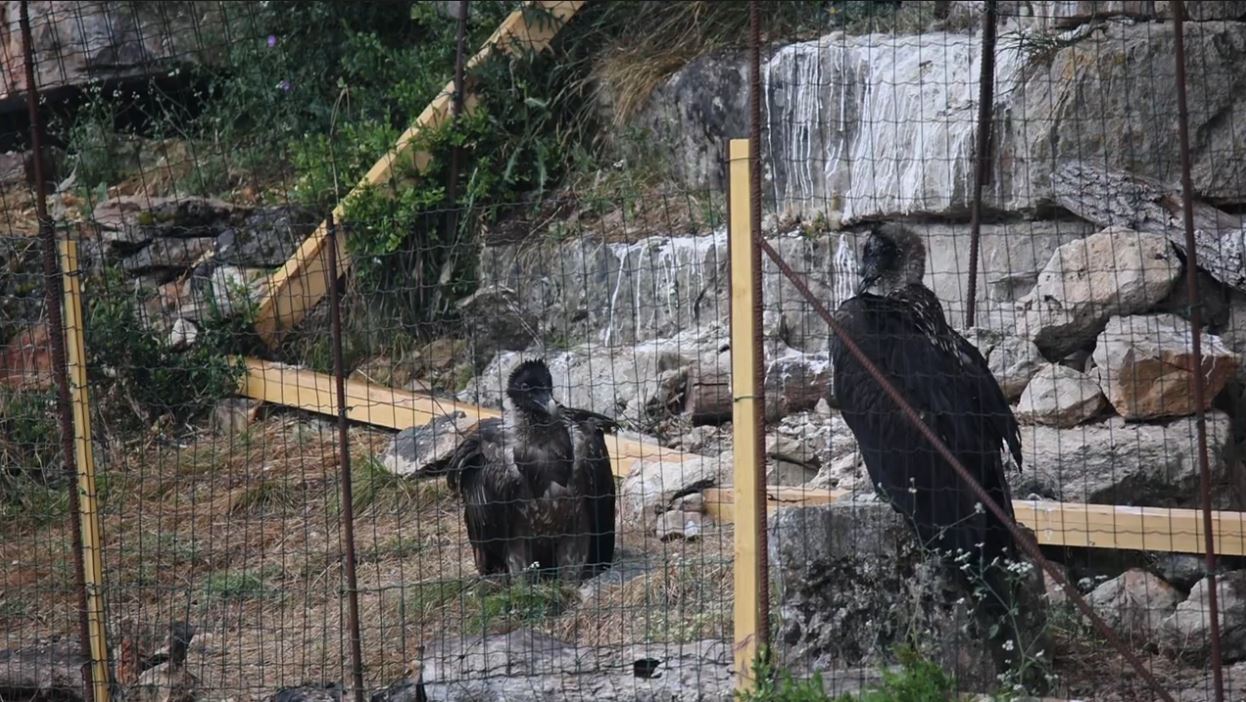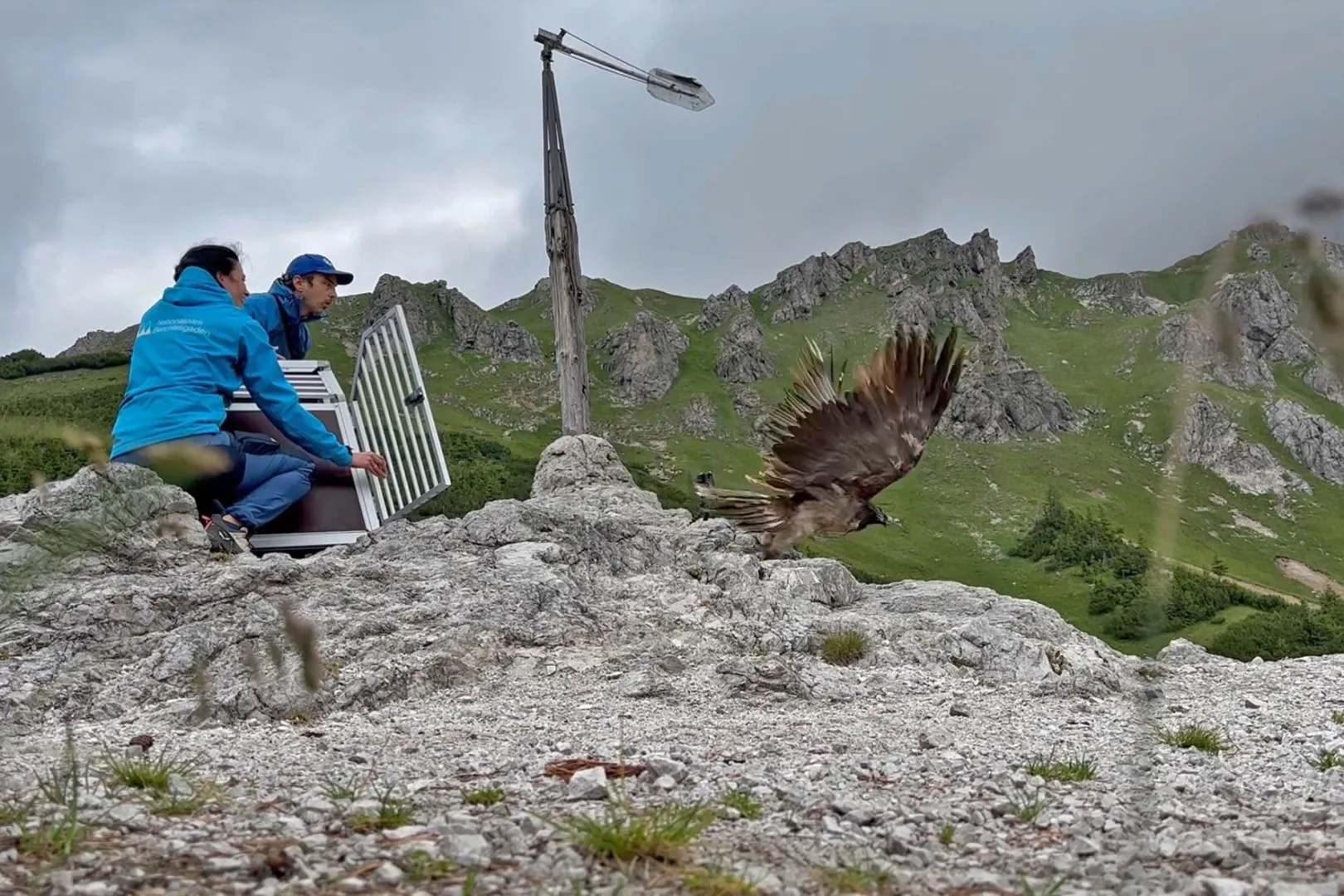
Since 2018, we released four Bearded Vultures and translocated two more in Maestrazgo, with the hope to establish a wild breeding population that will bridge the populations in the Pyrenees and Andalusia. All six vultures are alive and have been having adventures of their own in the wild. Let’s see what they have been up to in the last couple of months!
Amic
Amic and Iruela (c) Alvaro Camiña
Amic, one of the of two Bearded Vultures reintroduced in Maestrazgo last year, in the first-ever release there, was recently photographed by Alvaro Camiña, a member of the VCF advisory board in a nearby province. On 7 July, Amic has been sighted and photographed in Viniegra de Arriba (Rioja) together with Iruela, a male Bearded Vulture reintroduced last year in Andalusia. Amic is becoming more and more adventurous by day, currently exploring the Iberian Peninsula, often returning to Maestrazgo.

Alòs
Alòs is the other young Bearded Vulture we released last year. He is continuing to progress into adult life well, now exploring the Pyrenees. The vulture recently travelled to Huesca, in the Panticosa area.

Esera
The project translocated Esera from the Pyrenees to Maestrazgo in December 2018. The adult bird quickly returned to the Pyrenees after the release last year and has been there ever since.

Otal
Otal, the other adult we translocated as part of the project last year remains near the release site. Gradually expanding its movements, but still very attached to Tinença, the release site.

Basi and Boira
Tinença de Benifassà welcomed Basi and Boira this year, two more Bearded Vulture chicks. Both birds come from the Valcallent and Guadalentín Spanish Specialised Breeding Centres. We are happy to say that both birds fledged and are adapting well in the wild.
Overall, we are happy that all the birds are alive and well, and are fascinated to see the diversity of behaviours despite the small sample size. We aim to release more birds in the region, continue learning and rewilding the area with Bearded Vultures.
You can follow the latest movements of Amic and Alòs on our Bearded Vulture online maps.
Connecting populations of Bearded Vultures in Spain

The Maestrazgo region of Spain was historically a breeding site for Bearded Vultures and while there are no resident population the area is regularly visited by individuals released in Andalusia. The project to reintroduce the species to the region began in 2018 with the aim of establishing a wild breeding population that will bridge the populations in the Pyrenees and Andalusia, similar to the LIFE GYPCONNECT project in France that connects populations in the Pyrenees and the Alps. Over the course of the project captive-bred birds wil be released in specially constructed hacking sites in the Parque Natural de la Tinença de Benifassà and in a unique experiment the team, in close consultation and collaboration with us here at the Vulture Conservation Foundation, will translocate adult non-breeding or floater birds from the population in the Pyrenees to the Maestrazgo region to test how effective this method is and if that has an effect on the reproductive productivity of the Pyrenean population. As part of the project the released birds will be monitored by fitting them with GPS transmitters to better understand how the move around the region and to encourage movements of birds to the region a series of supplemetary feeding stations will be created.
The project is led by the Generalitat of Valencia, in collaboration with the Autonomous Communities from Aragón and Catalonia, the Spanish Ministry of Agriculture, Fish, Food and Environment and the us here at the Vulture Conservation Foundation.














